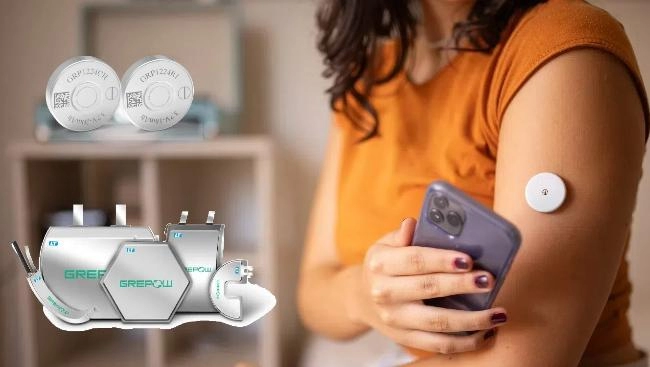Battery Restoration: Revitalize Your Old Batteries
Have you ever felt frustrated when your devices stop charging? Whether it’s your trusty old laptop, power tools, or even your car battery, you might wonder, “Can I bring these batteries back to life?” The good news is—you can! Battery restoration is a fascinating process that can help you revive old, worn-out batteries and save money in the long run. In this article, we’ll explore battery restoration, why it matters, and how you can easily do it yourself.
Part 1: Battery Restoration
Battery restoration is the process of bringing a battery back to its optimal condition. Over time, batteries lose their ability to hold a charge due to factors such as age, usage, and environmental conditions. Restoration aims to reverse these effects and restore the battery’s capacity, thereby extending its lifespan.
Why Battery Restoration Matters?
By extending the life of existing batteries instead of buying new ones, battery restoration can save you significant money. It also offers vital environmental benefits, reducing e-waste and lowering the demand for new battery production. By learning how to restore batteries, you not only save money but also contribute to a greener planet.
Part 2. How Do Batteries Work?
To better understand battery restoration, it helps to first understand how batteries work. Batteries consist of electrochemical cells that convert chemical energy into electrical energy. During discharge, chemical reactions occur, releasing electrons that generate electricity.
Over time, these chemical reactions can lead to issues such as sulfation in lead-acid batteries or dendrite formation in lithium-ion batteries, which significantly reduces their capacity. Understanding these processes will help you appreciate why restoration is a necessary step.
Part 3. Signs That a Battery Needs Restoration
Identifying when a battery needs restoration is key to maintaining its health. Here are some common signs:
- Reduced Runtime: If your devices are running out of power faster than usual, it might need restoration.
- Slow Charging: Noticeable delays in charging time can indicate a problem with the battery.
- Overheating: Excessive heat during charging or discharging is often a sign of trouble.
- Physical Damage: Bulging or leaking can indicate a safety hazard and requires immediate attention.
If you notice any of these signs, it’s time to consider restoring your battery.
Part 4. Benefits of Battery Restoration
Battery restoration offers several key advantages:
Cost-Effective
Instead of purchasing new batteries at a high price, restoring your old batteries can revitalize them for a fraction of the cost.
Environmental Benefits
By extending the life of batteries, you help reduce electronic waste and minimize environmental harm.
Improved Performance
Restored batteries often perform better than their degraded counterparts, providing longer-lasting power and efficiency.
Part 5. Methods for Battery Restoration
The restoration process can vary depending on the type of battery you’re working with. Here are some methods for different battery types:
Lead-Acid Batteries
- Desulfation: Desulfation involves using a desulfator device to send high-frequency pulses through the battery to break down the lead sulfate crystals that form over time.
- Equalization Charging: Controlled overcharging helps balance the individual cells within the battery and restore its capacity.
- Adding Water (if applicable): For flooded lead-acid batteries, adding distilled water helps maintain the electrolyte levels and improve battery performance.
Lithium-Ion Batteries
- Cell Balancing: Special chargers designed for lithium-ion cells help balance the voltage of the cells within the battery pack.
- Cycling: This method involves fully charging and discharging the battery multiple times to effectively restore its capacity.
- Temperature Management: Maintaining lithium-ion batteries at an optimal temperature can prevent damage and improve longevity.
By understanding these methods, you can choose the best restoration approach for your batteries, ensuring they’re as good as new!
For more detailed information on battery technology and maintenance, check out Maintenance of Keheng Lithium Batteries.
Battery Refurbishment: A Complete Guide
Battery refurbishment is a great way to restore old or aging batteries and extend their lifespan. This process can save you money and reduce waste. In this guide, we’ll cover everything you need to know about battery refurbishment, including essential tools, step-by-step instructions, and common mistakes to avoid.
Part 1: Why Battery Maintenance Matters
Maintaining your batteries is crucial to maximizing their lifespan and performance. Regular maintenance can prevent issues like sulfation in lead-acid batteries and help you avoid costly replacements.
How Battery Refurbishment Works
Refurbishment involves restoring a battery’s capacity by addressing issues like sulfation, cell imbalance, or degradation. The process varies depending on the battery type but typically includes cleaning, charging, and balancing.
Part 2: Common Battery Types and Their Refurbishment Methods
Lead-Acid Batteries
Lead-acid batteries are commonly used in vehicles, power tools, and backup power systems. They are prone to sulfation, a process where lead sulfate crystals accumulate on the battery plates, leading to reduced performance. Refurbishing lead-acid batteries involves desulfation and rebalancing to restore their full potential.
Lithium-Ion Batteries
Lithium-ion batteries are widely used in smartphones, laptops, and electric vehicles due to their high energy density and longer lifespan. While they are more durable than lead-acid batteries, they can still experience capacity loss over time. Refurbishing lithium-ion batteries focuses on balancing the cells and improving performance through charge/discharge cycles.
Part 3: Factors Affecting Battery Life
Several factors can impact the lifespan of a battery, including:
- Temperature: Extreme temperatures can shorten battery life. Always store batteries and rechargeable batteries in a cool, dry environment.
- Charging Habits: Overcharging or deep discharging batteries can reduce their lifespan. Avoid these practices whenever possible.
- Maintenance: Regular maintenance and correct charging techniques help extend battery life.
Part 4: The Impact of Battery Temperature
Batteries are sensitive to temperature, especially when charging or discharging. Maintaining an optimal temperature range is crucial during this process to prevent damage and prolong battery life.
Part 5: Essential Tools for Battery Refurbishment
To successfully refurbish batteries, you’ll need some essential tools:
- Multimeter: A tool to measure voltage and check battery balance.
- Battery Charger: A smart charger suitable for your specific battery type.
- Desulfator (for Lead-Acid Batteries): A device designed to break down lead sulfate crystals and restore battery capacity (also known as a desulfation device).
- Safety Gear: Gloves and goggles to protect yourself during the refurbishment process.
- Distilled Water (for Lead-Acid Batteries): Used to maintain proper electrolyte levels in flooded lead-acid batteries.
Part 6: Step-by-Step Guide to Refurbishing Lead-Acid Batteries
Step 1: Safety First
Always wear gloves and goggles when handling batteries to protect yourself from acid splashes or electrical shock.
Step 2: Check Voltage
Use a multimeter to measure the voltage of each cell in the battery. This helps identify weaker cells that may need attention.
Step 3: Desulfation Process
Connect the desulfator following the manufacturer’s instructions. This device sends high-frequency pulses through the battery to break down lead sulfate crystals.
Step 4: Apply an Equalization Charge
If necessary, apply an equalization charge by connecting a smart charger and slightly overcharging the battery under controlled conditions.
Step 5: Add Water (If Applicable)
For flooded lead-acid batteries, check the electrolyte level and add distilled water as needed.
Step 6: Test Performance
After refurbishment, perform a load test to ensure the battery performs well under stress.
Part 7: Step-by-Step Guide to Refurbishing Lithium-Ion Batteries
Step 1: Safety Precautions
Since lithium-ion batteries are sensitive, wear safety gear before working with them.
Step 2: Check Cell Balance
Use a multimeter to measure the voltage of each cell in the battery pack. Identifying imbalances early can prevent future issues.
Step 3: Use a Balancing Charger
Connect the battery pack to a balancing charger to ensure all cells are charged evenly.
Step 4: Cycle Charge/Discharge
If safe to do so, fully charge and then fully discharge the battery pack a few times to improve overall performance.
Step 5: Test Performance
After cycling the battery, perform a load test to confirm it is operating at peak performance.
Part 8: Common Mistakes in Battery Refurbishment
When refurbishing batteries, avoid these common mistakes:
- Ignoring Safety: Always wear protective gear like gloves and goggles.
- Using the Wrong Charger: Ensure you are using a charger compatible with your specific battery type to prevent damage.
- Skipping Tests: Regularly check voltage and performance throughout the refurbishment process. Skipping these tests can lead to overlooking critical issues.
Part 9: Frequently Asked Questions
What Types of Batteries Can Be Refurbished?
Most rechargeable batteries, including lead-acid, nickel-cadmium (NiCd), nickel-metal hydride (NiMH), and lithium-ion batteries, can be refurbished.
How Long Does the Battery Refurbishment Process Take?
The time required to refurbish a battery varies depending on its type and condition. Typically, it can take anywhere from a few hours to a few days.
Can I Refurbish My Car Battery at Home?
Yes, with the right tools and safety precautions, you can refurbish your car’s lead-acid battery at home without professional help.
Is Battery Refurbishment Safe?
Refurbishment is generally safe if done correctly with proper safety measures. Always exercise caution when handling batteries to avoid accidents.
How Often Should I Consider Refurbishing Them Batteries?
The frequency of refurbishment depends on the battery’s usage and condition. However, you should consider refurbishing them when you notice a decline in performance or when the battery starts losing power faster than usual.
If you notice a continuous decrease in performance or a shortening of run time over time, it may be time for battery maintenance, repair, or replacement.
More Articles:
How to Safely Clean a Leaking Battery’s Electrodes: A Step-by-Step Guide
This comprehensive guide will detail the risks, safety precautions, and proper procedure for safely cleaning the electrodes of a leaking battery.
Portable Battery Charger vs. Power Bank: What’s the Difference?
A portable battery charger is a general term for all portable charging devices, while a power bank, with its built-in battery, allows users to charge devices without an outlet.
The Ultimate Guide to Using a Lithium-Ion Jump Starter
A lithium-ion jump starter is an essential tool for automotive emergencies. This guide will focus on its uses, safety protocols, maintenance, and why it is a smart choice for drivers.
What is a Portable Battery Charger?
Portable battery chargers are designed to provide power to your devices while traveling.
How to Choose the Best Battery Pack for Your Needs: Capacity, Performance, and More
Choosing the right battery pack is essential to the reliability and performance of your device. This guide will cover key factors such as capacity and safety to help you make an informed decision.







